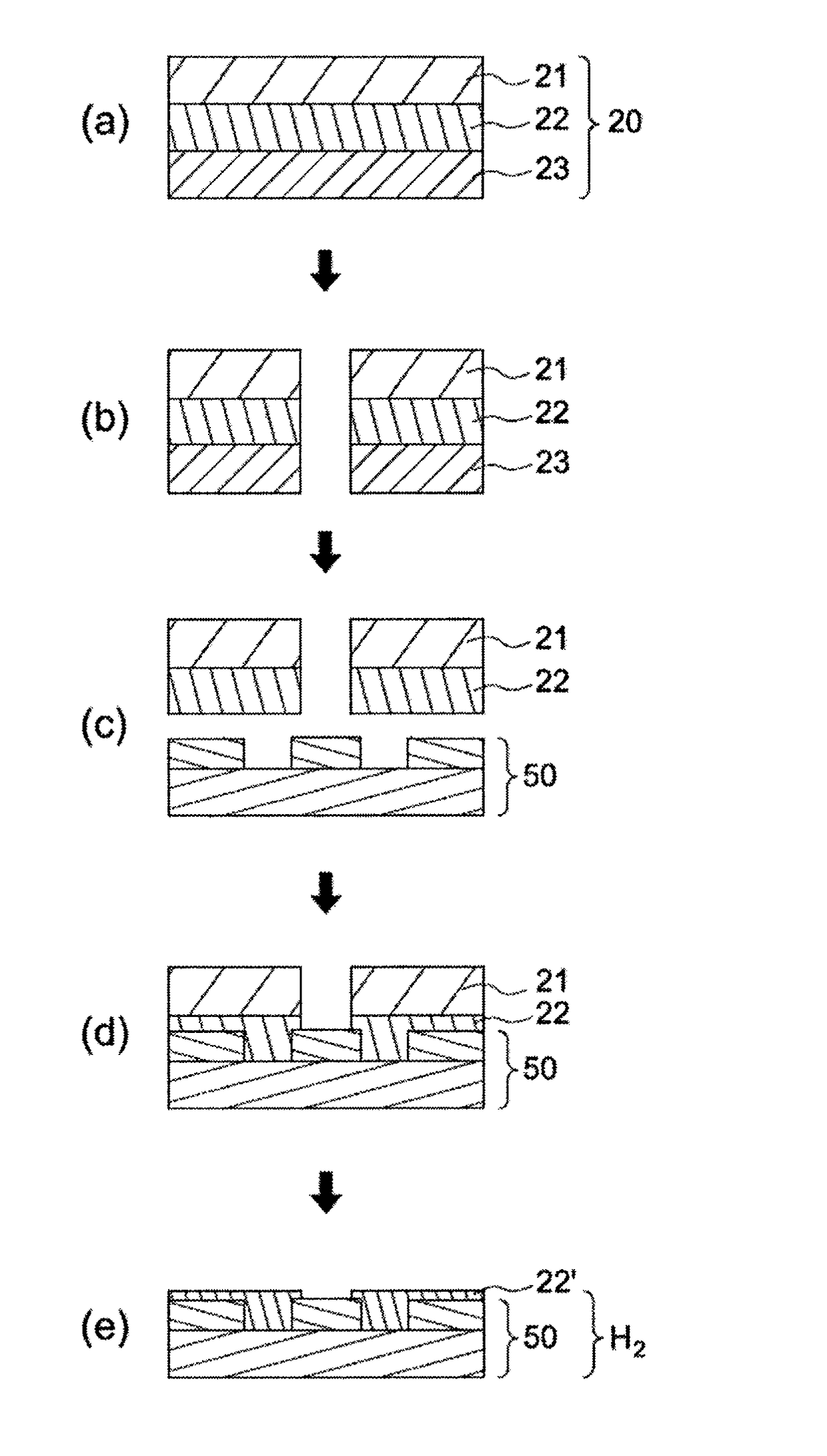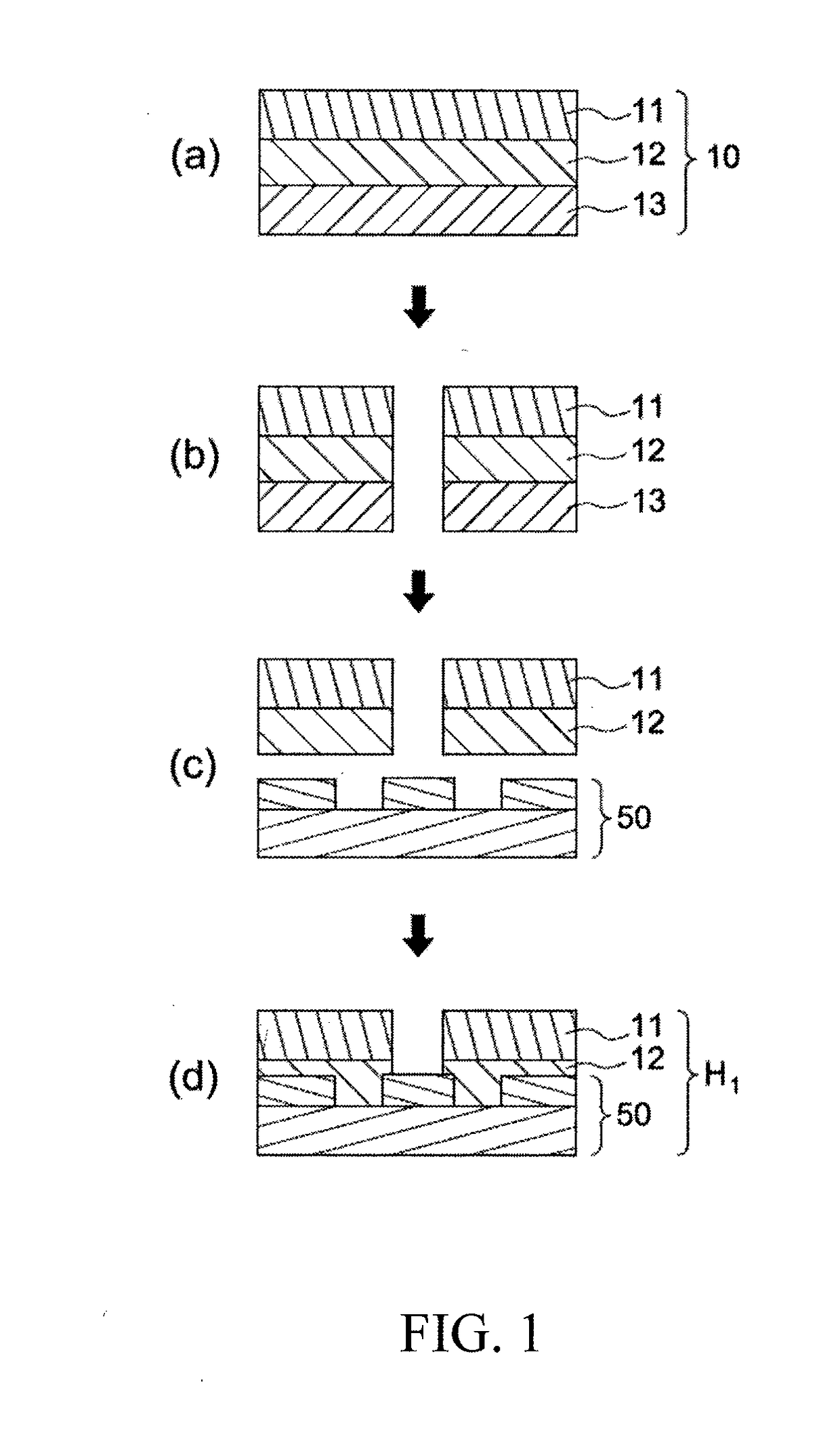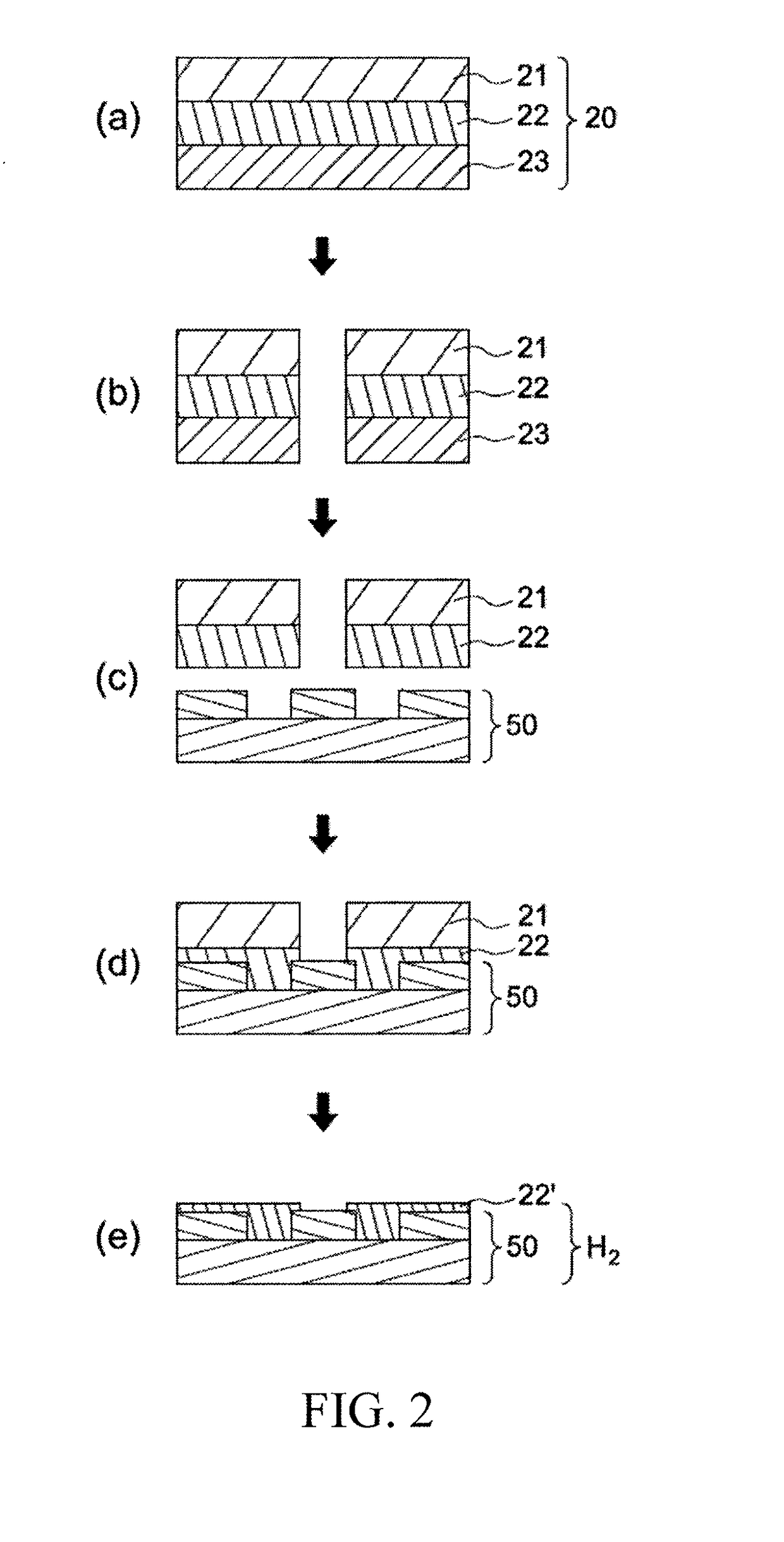Method for preparing patterned coverlay on substrate
a technology of patterned coverlay and substrate, which is applied in the direction of film/foil adhesives, synthetic resin layered products, solid-state devices, etc., can solve the problems of reducing the toughness of the coverlay, and increasing so as to and reduce the thickness of the coverlay. , the effect of low warpag
- Summary
- Abstract
- Description
- Claims
- Application Information
AI Technical Summary
Benefits of technology
Problems solved by technology
Method used
Image
Examples
preparation example
[0149]1. Synthesis of Non-Photosensitive Polyimide Precursor Resin PAA-1
[0150]15.23 (0.052 mol) 4,4′-Biphthalic dianhydride (referred to hereinafter as BPDA) was dissolved in 100 g N-methyl-2-pyrrolidone (referred to hereinafter as NMP) and 0.959 g (0.013 mol) n-butanol and 0.48 g (0.006 mol) 1-methylimidazole were added dropwise. The solution was stirred at a fixed temperature of 60° C. for 2 hrs to carrying out the reaction. 82.88 g (0.259 mol) 2,2′-bis(trifluoromethyl) benzidine and 300 g NMP were added to the solution at 10° C., stirred for 0.5 hr, and then 60.92 g (0.207 mol) BPDA and 200 g NMP were added and stirred at 10° C. After 4 hrs, the temperature was increased to 60° C. and the reaction was carried out for 8 hrs with stirring. Finally, 0.83 g (0.006 mol) ethyl trifluoroacetate was added and stirred for 1 hr. Then, 0.22 g 5-aminotetrazole and 24 g NMP were added at room temperature and stirred for 1 hr, to obtain a polyimide precursor resin PAA-1 having a solid content ...
example 1
ation
[0153]A 20*20 cm sheet was taken from the dry film prepared in the preparation example and a round hole of ¼″ (that is, about 6.35 mm in diameter) was punched out of the sheet by using a mechanical punching machine, and then the release film was removed.
[0154]A 20*20 cm copper clad laminate (L / S=30 / 30 μm; L / S=line width / line spacing; thickness 12.7 μm) on which a circuit was fabricated was provided. Deionized water was applied onto the surface (which has a circuit formed thereon) of the copper clad laminate, and the sheet was adhered to the copper clad laminate using hot rollers at a temperature of 80° C. and under a pressure of 5 kg / cm2 in such a manner that the polyimide precursor layer faces the surface of the copper clad laminate having the circuit. The PET film was peeled off, and then the sample was placed in a nitrogen oven, and baked by heating for 1 hr at 170° C. and then for 2 hrs at 350° C., to prepare a circuit board FPC-1 with patterned polyimide coverlay.
example 2
ation
[0155]The method is the same as that in Example 1, except that no deionized water was applied onto the surface (which has a circuit formed thereon) of the copper clad laminate. A circuit board FPC-2 with patterned polyimide coverlay was prepared.
PUM
| Property | Measurement | Unit |
|---|---|---|
| Thickness | aaaaa | aaaaa |
| Thickness | aaaaa | aaaaa |
| Flexibility | aaaaa | aaaaa |
Abstract
Description
Claims
Application Information
 Login to View More
Login to View More - R&D
- Intellectual Property
- Life Sciences
- Materials
- Tech Scout
- Unparalleled Data Quality
- Higher Quality Content
- 60% Fewer Hallucinations
Browse by: Latest US Patents, China's latest patents, Technical Efficacy Thesaurus, Application Domain, Technology Topic, Popular Technical Reports.
© 2025 PatSnap. All rights reserved.Legal|Privacy policy|Modern Slavery Act Transparency Statement|Sitemap|About US| Contact US: help@patsnap.com



